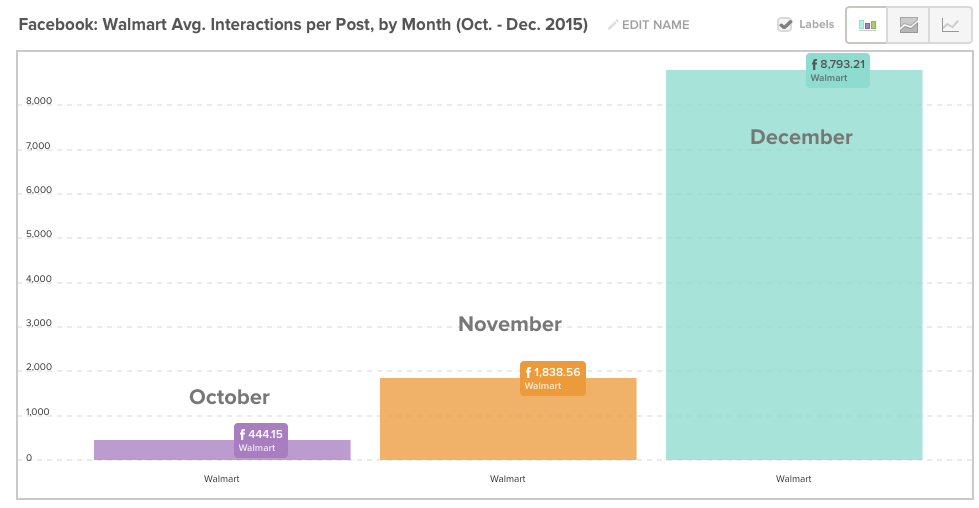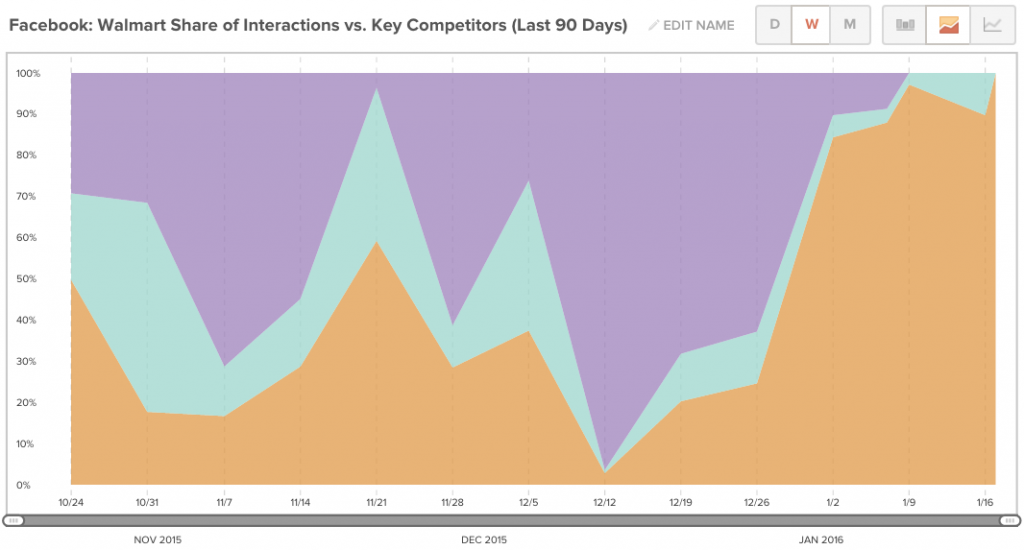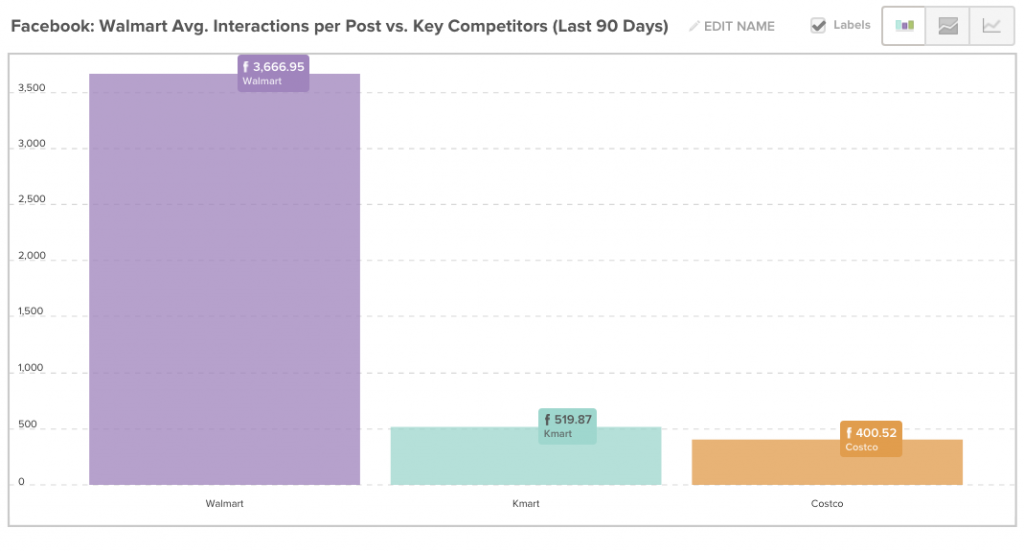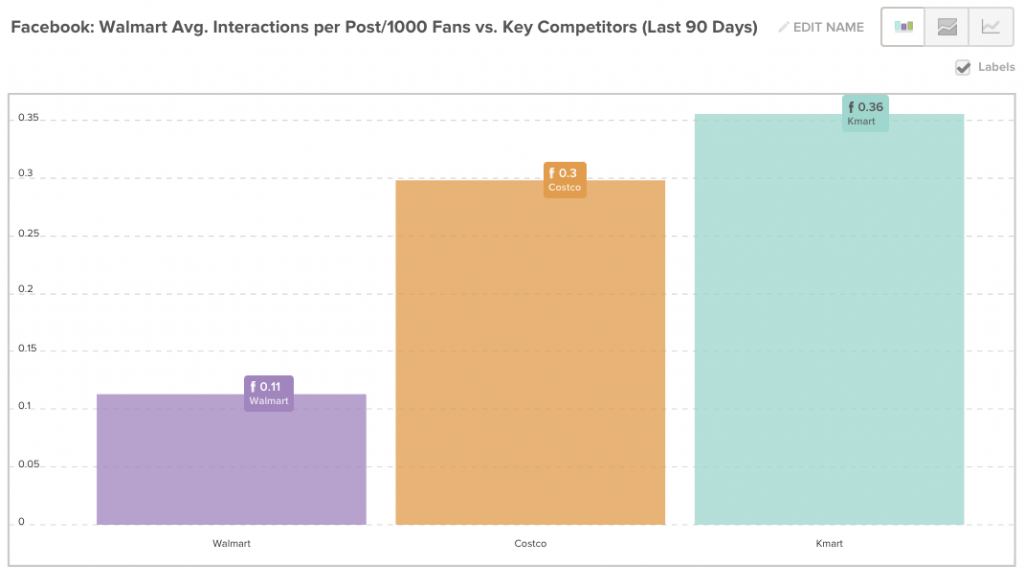If I were a betting woman, I’d wager that your overarching goal for 2016 is to bring more revenue in for your company. It is worthwhile to take a look at the contribution of your own marketing efforts toward this objective alone. However, this doesn’t provide the insight needed into what other brands are reaching your target audience, expanding reach, and ultimately driving traffic and awareness further down their marketing funnels.
Today, your content has a lot of competition for attention, so it’s important to measure progress in the context of its success relative to other competitive brands. In other words, your goods or services are not sold in a vacuum, and your reporting should reflect this reality by including measurements from competitors and benchmarks.
Here are three metrics to examine when evaluating your performance toward 2016 goals:
1. Share of Interactions
Share of interactions – which looks at your total interactions received on a channel versus your competitors’ total interactions – shows a very succinct measurement of all the factors that inform your ability to engage with your audience at a given time, including: audience size, engagement rates, and your publishing frequency.
For example, let’s say I am responsible for Walmart’s Facebook content. Looking at just my own output, I am seemingly doing well. Month-over-month, my engagement is improving significantly.
However, when I look at my performance relative to key competitors, K-Mart (turquoise) and Costco (orange), I can see Costco has become completely dominant on Facebook. They’re taking over the share of interactions I used to occupy when I was publishing more actively toward the end of the year.
Now that I understand Walmart’s share of voice, as their marketer, I can decide which of those three factors I’ll want to improve. In this case, I’d want to begin by increasing the volume of posts published since this slowdown in activity has opened the door for my competitor to take over my share of interactions, and receive the engagement I depend on to increase my reach.
2. Interactions as a function of following
Measuring engagement relative to your competitive landscape means you’ll have meaningful context for performance, and that you’ll look at yourself versus brands that may be very different than yours. They might be more mature, or have larger marketing teams, or be able to outspend you by a factor of 5x, so it’s important to measure performance against these brands in a way that acknowledges these differences. To level the playing field, when we use a normalizing metric for engagement, we’re looking at interactions per post as a function of following size. In this scenario, I look first at average interactions per post, and next at interactions per post per 1,000 followers.
Looking again at Walmart, I can see that even though I am receiving more interactions per post overall, Costco and Kmart do a better job of engaging their followers on a percentage basis, and they seem to be more efficient at improving their reach with shares. I can use this as a cue to evaluate their content, either natively, or in TrackMaven, to determine what tactics are making both those brands more successful in engaging their following.
3. Impact
When looking at my content versus content with similar subject matter published by a competitor, I don’t immediately know what the number of shares the content received really means. Is 1,000 shares for my competitor really good for them? Or is it middling compared to their average? Imagine looking at a blog post from a competitor’s brand. By pasting the URL into a tool called SharedCount, I can quickly determine how many shares a post has received on Facebook, LinkedIn, Google+, Pinterest, and StumbleUpon, and use any or all of those to calculate an average level of performance their posts over the preceding seven to 30 days. By comparing one post to their average, I can see how impactful 1,000 shares is compared to the average. Looking at my post on a similar subject matter, I can see that my post, measured the same way, is more successful on an impact basis since it outperforms my average by a larger factor.
These three metrics will add color and context to your monthly reporting and give an overall idea of how your content compares to that of your competitive set. In addition, you’ll show your progress toward your content goals and performance of your campaigns in a way that reflects how your content is consumed, so you can make more meaningful adjustments to your strategy as you work toward your 2016 goals.
In addition, measuring your performance against competitors allows you to gain insight into their performance, which is the first step towards understanding and learning from their marketing strategies so you can accelerate your company’s rate of learning and growth.





